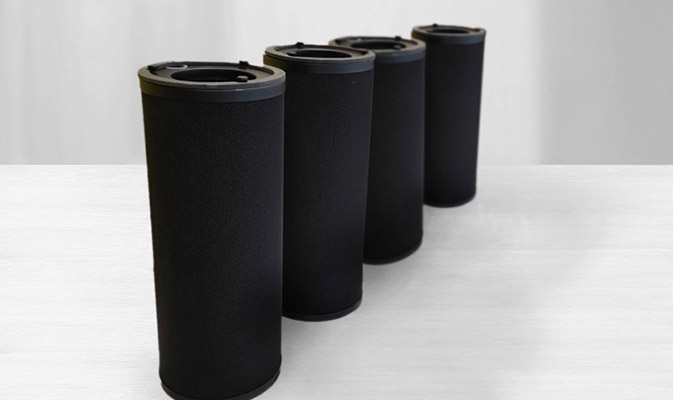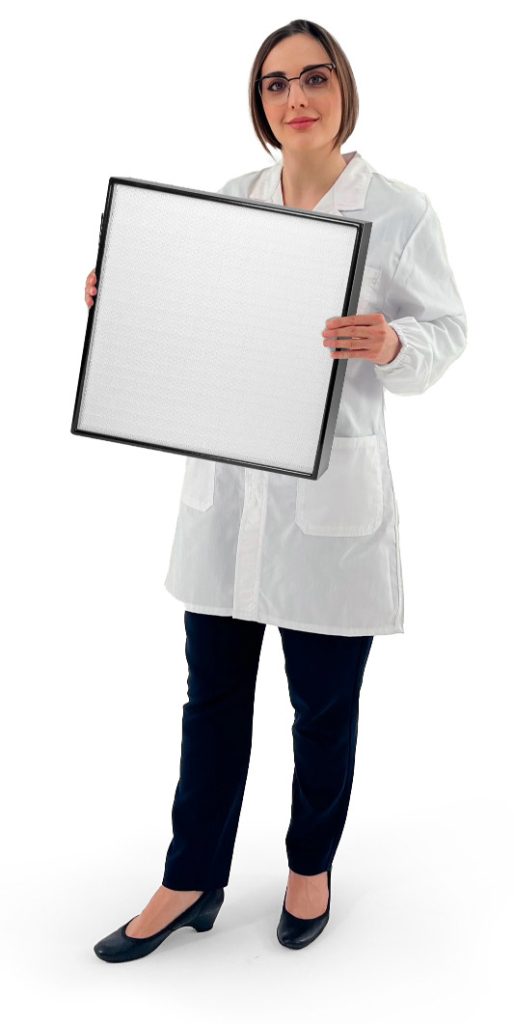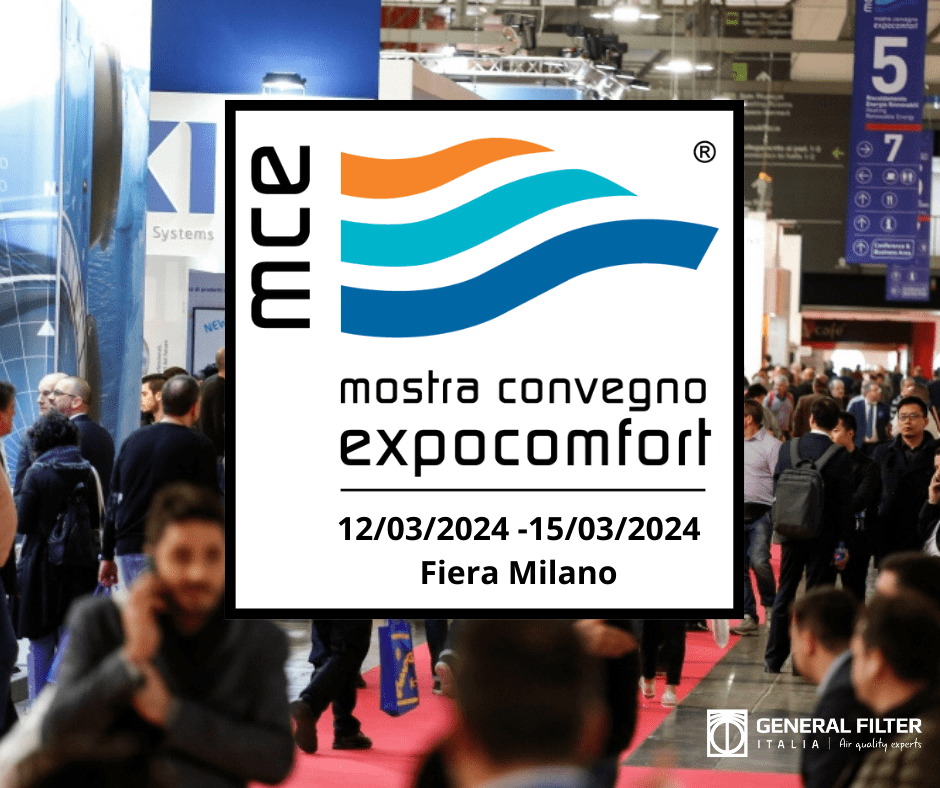AIR QUALITY
EXPERTS
Per un’aria più pulita segui col mouse il passaggio da filtro a filtro








Il filtro giusto
per ogni
settore
Progettare e fornire il filtro corretto richiede non solo una grande conoscenza tecnica dei materiali e dei prodotti, ma anche un’esperienza e una conoscenza profonda dei settori di utilizzo e dei macchinari tecnici. La nostra expertise è ampia e solida, consulta i settori per i quali General Filter lavora.
Una protezione fino al 99,999995%.
Trova il sistema di filtrazione perfetto grazie alla nostra consulenza specifica
Più di 5.000 ore lavoro e oltre 350 progetti realizzati per più di 10 settori: questi sono solo alcuni numeri per raccontare quanto è preziosa e specifica la nostra consulenza. Un semplice appuntamento è il primo passo verso un nuovo sistema di filtrazione.

Una protezione fino al 99,999995%.
Trova il sistema di filtraggio perfetto grazie alla nostra consulenza specifica
Più di 5.000 ore lavoro e oltre 350 progetti realizzati per più di 10 settori: questi sono solo alcuni numeri per raccontare quanto è preziosa e specifica la nostra consulenza. Un semplice appuntamento è il primo passo verso un nuovo sistema di filtrazione.

Massima qualità dell'aria

Filtrazione
primaria
Quando si parla di filtrazione primaria si intende la filtrazione realizzata con setti e celle filtranti che rientrano nel gruppo ISO coarse secondo EN ISO 16890-1, normalmente impiegate nel condizionamento civile e come prefiltri alle sezioni con maggiore efficienza.

Filtrazione
fine
Questa è la parte della filtrazione più particolare in quanto deve essere in grado di trattenere la contaminazione cosiddetta “fine”, che di per sé comprende un campo di azione molto vasto. La nostra gamma comprende celle, tasche e filtri che in genere rientrano nelle classi “M” ed “F” della normativa EN 779:2012.

Filtrazione
assoluta
È il massimo grado di filtrazione oggi raggiungibile. In questa fascia rientrano tutti i filtri semiassoluti della nostra gamma rientranti nella classe “E” e i filtri assoluti rientranti nella classe “H” della normativa europea EN 1822-1:2019 e che rappresentano in maniera evidente l’alto grado di tecnologia raggiunta dal Gruppo.

Filtrazione
molecolare
I filtri finora classificati, nonostante l’alta efficienza da essi raggiunta, nulla possono fare di fronte a problemi di inquinamento da sostanze volatili o in fase gassosa: perciò in questa fascia sono classificati tutti i filtri della nostra produzione che usano, come mezzo filtrante, il carbone attivo che purifica l’aria attraverso un processo chimico.

sistemi
housing
Tutti i filtri elencati devono, per poter ottimizzare al massimo il loro rendimento, trovare un alloggio adeguato: ecco perché General Filter offre una serie di equipaggiamenti, di sistemi e di accessori utili, e a volte indispensabili, per ottenere il miglior risultato finale.
Un lavoro costante sui requisiti di normativa
01
Normativa EN ISO 16890
Filtri aria per la ventilazione generale L’Organizzazione Internazionale per la Normazione (ISO) ha creato un nuovo standard globale, la EN ISO16890, che definisce la classificazione e le procedure di test dei filtri per l’aria impiegati in sistemi generali di ventilazione. In particolare, la EN ISO16890 si riferisce agli elementi per la filtrazione dell’aria prendendo in considerazione particelle di dimensioni comprese fra 0,3 μm e 10 μm .
02
Normativa UNI EN 1822-1:2019 & EN ISO 29463
Filtri per l’aria ad alta efficienza (EPA, HEPA e ULPA) La norma si applica ai filtri per l’aria ad alta e altissima efficienza e a bassissima penetrazione (EPA, HEPA e ULPA), utilizzati nel campo della ventilazione e del condizionamento dell’aria, come pure in processi tecnologici quali la tecnologia delle camere bianche o dell’industria farmaceutica. Essa stabilisce un procedimento per la determinazione dell’efficienza sulla base di un metodo di conteggio delle particelle per mezzo di un aerosol liquido (o in alternativa solido) di prova e permette di classificare questi filtri, in modo normalizzato, in funzione della loro efficienza.
03
Normativa ISO 14644-1
Camere bianche e ambienti controllati associati Parte 1: Classificazione della pulizia dell’aria La norma ISO 14644-1 riguarda la classificazione della pulizia dell’aria nelle camere bianche e negli ambienti controllati. La classificazione dell’aria in base a tale norma è compiuta esclusivamente in termini di concentrazione di particelle sospese. Inoltre, per la classificazione secondo questa norma, vengono prese in considerazione particelle di dimensione definite in un range da 0.1 micron fino ai 5 micron.

04
Normativa EN 16798-3:2018
Ventilazione degli edifici non residenziali. La norma si applica alla progettazione e alla realizzazione dei sistemi di ventilazione e climatizzazione per gli edifici non residenziali caratterizzati dall’occupazione umana, ad esclusione delle applicazioni in processi industriali. Essa definisce i principali parametri rilevanti per tali impianti e non si occupa degli edifici a ventilazione naturale. La norma, attualmente in revisione, pone l’attenzione sul raggiungimento di un ambiente confortevole e sano all’interno degli edifici, utilizzando sistemi di ventilazione che abbiano costi di gestione accettabili.
05
Normativa UNI 10339
Filtri per l’aria ad alta efficienza (EPA, HEPA e ULPA).
La norma si applica ai filtri per l’aria ad alta e altissima efficienza e a bassissima penetrazione (EPA, HEPA e ULPA), utilizzati nel campo della ventilazione e del condizionamento dell’aria, come pure in processi tecnologici quali la tecnologia delle camere bianche o dell’industria farmaceutica. Essa stabilisce un procedimento per la determinazione dell’efficienza sulla base di un metodo di conteggio delle particelle per mezzo di un aerosol liquido (o in alternativa solido) di prova e permette di classificare questi filtri, in modo normalizzato, in funzione della loro efficienza.
06
Normativa UNI 11425
Impianto di ventilazione e condizionamento a contaminazione controllata (VCCC) per blocco operatorio Progettazione, installazione, messa in marcia, qualifica, gestione e manutenzione. La norma fornisce le indicazioni per la progettazione, l’installazione, la messa in marcia, il controllo delle prestazioni, l’accettazione, la gestione degli impianti e dei componenti che concorrono al controllo della contaminazione ambientale e al mantenimento di prefissate condizioni termo igrometriche nei reparti specificatamente destinati allo svolgimento di attività chirurgica, detti blocchi operatori.
News

In un clic sei qui
da noi
Scopri l’esperienza del Virtual Tour di General Filter e segui la visita virtuale dell’azienda, alla scoperta del team di lavoro, della produzione e dei prodotti General Filter. Hai una domanda specifica?
Ti rispondiamo noi!

In un clic sei qui
da noi
Scopri l’esperienza del Virtual Tour di General Filter e segui la visita virtuale dell’azienda, alla scoperta del team di lavoro, della produzione e dei prodotti General Filter. Hai una domanda specifica?
Ti rispondiamo noi!
Contattaci
subito
Leggiamo a stretto giro ogni messaggio.
In caso di urgenze o per richiedere una consulenza tecnica scritta, siamo a completa disposizione: ti basta compilare il form qui a fianco.
Contattaci
subito
Leggiamo a stretto giro ogni messaggio.
In caso di urgenze o per richiedere una consulenza tecnica scritta, siamo a completa disposizione: ti basta compilare il form qui a fianco.








